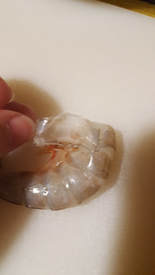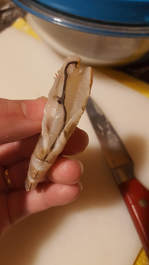|
This is less a technique and more of a tip. I have been soaking my lasagna noodles rather than boiling them or purchasing oven ready noodles for years. I can't remember where I picked it up (probably from Rachel Ray), but I find it to be the easiest way to get my noodles ready for assembly.
Here’s what you need:
Get your container ready. I have two pans I can use for lasagna, so i use one for assembly and the other for soaking. Lay out your lasagna noodles to soak. I usually put one or two more into the water depending on what I will be using the lasagna noodles to make. Once you have your noodles ready, submerge them in hot water. The highest heat out of your tap will be fine. I find that letting them soak when I preheat the oven and get my sauce ready is all the time they need. They don't cook entirely, but they become flexible for lasagna rolls and par cooked for a typical lasagna. They will finish cooking in the sauce while you bake your pasta product. And you can do it to any stuffed pasta as well. I soak manicotti and large shells this way to keep them from breaking during a boil.
0 Comments
 Introducing Technique Tuesday: a day where we learn together how to do something new, annoying, or difficult. I will try to post these every week as I expand my culinary knowledge. Today, we start with cleaning shrimp, one of the most fiddly and small processes in cooking. I revisit it in order to make shrimp tacos. Some bags of frozen shrimp claim to be ready to cook out of the bag, but it isn't always true! Here is what to look for: Shell Shrimp have a very thin shell around most of their body that is easily peeled off. This is the easy part. Start from the head and make your way down to the tail. Make sure you take the legs with you. They aren't pleasant to eat. If you have trouble peeling from the top, you can start at the feet.  Intestines. AKA The Vein. Trust me, they’ll be there if the shell is still on. You can see it through the flesh of the shrimp: that dark line about the back. This needs to be removed, or you’ll hit a gritty spot in a bite that is most definitely not something you want in your food. Start with a small peering knife and cut along the back of the shrimp near the vein. You won't have to go deep. This cut is so that you can pull the gut out of the shrimp cleanly. Once this is done, start and the head and pull the line out. If it breaks, don't worry. You can wash the grit out and keep pulling. It can be a lot of work, but knowing how to do it will save your meal if you wind up with an uncleaned bag. Good luck out there. May your shrimp always be clean, but if they aren't, now you’ll know what to do. |
The MissionAn idea born in Normal, Illinois, Eating Normal hopes to chronicle the eating Experiences of a Red bird. Pledge monthly to our patreon!
Or, you know, support the mission with caffeine! Buy me a coffee through Ko-Fi. Archives
May 2020
Categories
All
|
 RSS Feed
RSS Feed